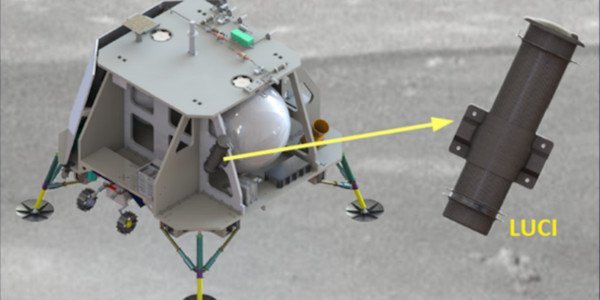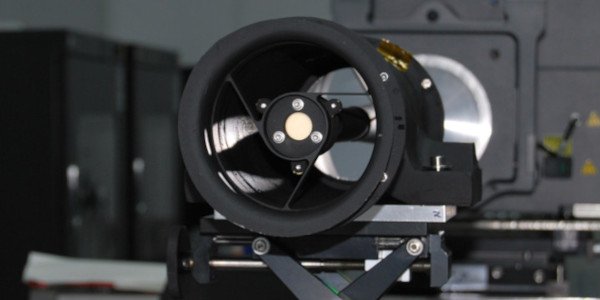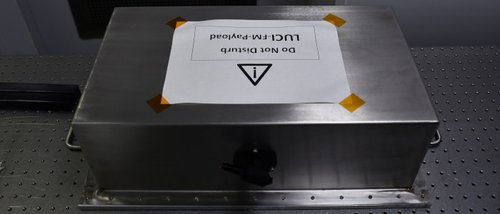Lunar Ultraviolet Cosmic Imager
The Lunar Ultraviolet Cosmic Imager (LUCI) is an innovative all-spherical mirrors telescope, initially poised to fly as a scientific UV imaging payload on a lunar mission in collaboration with Indian Aerospace Company-TeamIndus, Axiom Research Labs Pvt. Ltd. Observations from the Moon provide a unique opportunity to observe the sky from a stable platform far above the Earth's atmosphere.
Design, realization and calibration of LUCI was the heart of the PhD thesis of Joice Mathew (2018). He is currently an instrumentation scientist at the Research School of Astronomy and Astrophysics, Australian National University.
Science Case

LUCI will observe at a fixed elevation angle and will detect stars in the near ultraviolet (200-320 nm) to a limiting magnitude of 12 AB, with a field of view of around 0.5 degrees. Sky coverage over one lunar night is approximately 60 square degrees. This instrument is designed as a pathfinder for larger observatories on lunar surface.
The primary science goal is to study bright regions of the sky (mag_AB < 10) in the near UV band:
- OB associations
- Massive star forming regions
- Bright planetary nebulae
Instrument

- Telescope: Cassegrain (all spherical) near-UV Imager
- Aperture: 80 mm
- Resolution: 5"
- Detector: UV-sensitive CCD
- Detector format: 1360 x 1024
- Field of view: 0.46 x 0.34 deg.
- Observing band: 200-320 nm
- Brightness limit: 3 AB
- Sun avoidance: 45 deg.
- Mass: 1.7 Kg
- Dimensions: 450 x 150 mm (L x D)
- Power: 2.5 W
- Elec. interface: DB-15 serial connector
Status

The instrument has been assembled in the class 1000 clean room at the M.G.K Menon Laboratory for Space Sciences. Ground calibration and preliminary qualification tests are also completed. It is packed in a secure enclosure and stored in the clean room environment, awaiting launch opportunities.
Publications
- Mathew, Joice. et al, Prospect for UV observations from the Moon. III. Assembly and ground calibration of Lunar Ultraviolet Cosmic Imager (LUCI), Astrophysics and Space Science, Volume 364, Issue 3, article id. 53, 12 pp (2019)
- Mathew, Joice. et al, Opto-mechanical assembly and ground calibration of LUCI, Proceedings of the SPIE, Volume 10699, id. 106992V 10 pp. (2018)
- Mathew, Joice. et al, Prospect for UV observations from the Moon. II. Instrumental design of an ultraviolet imager LUCI, Astrophysics and Space Science, Volume 362, Issue 2, article id.37, 11 pp. (2017)
- Safonova, M. et al, Prospect for UV observations from the Moon, Astrophysics and Space Science, Volume 353, Issue 2, pp.329-346 (2014)